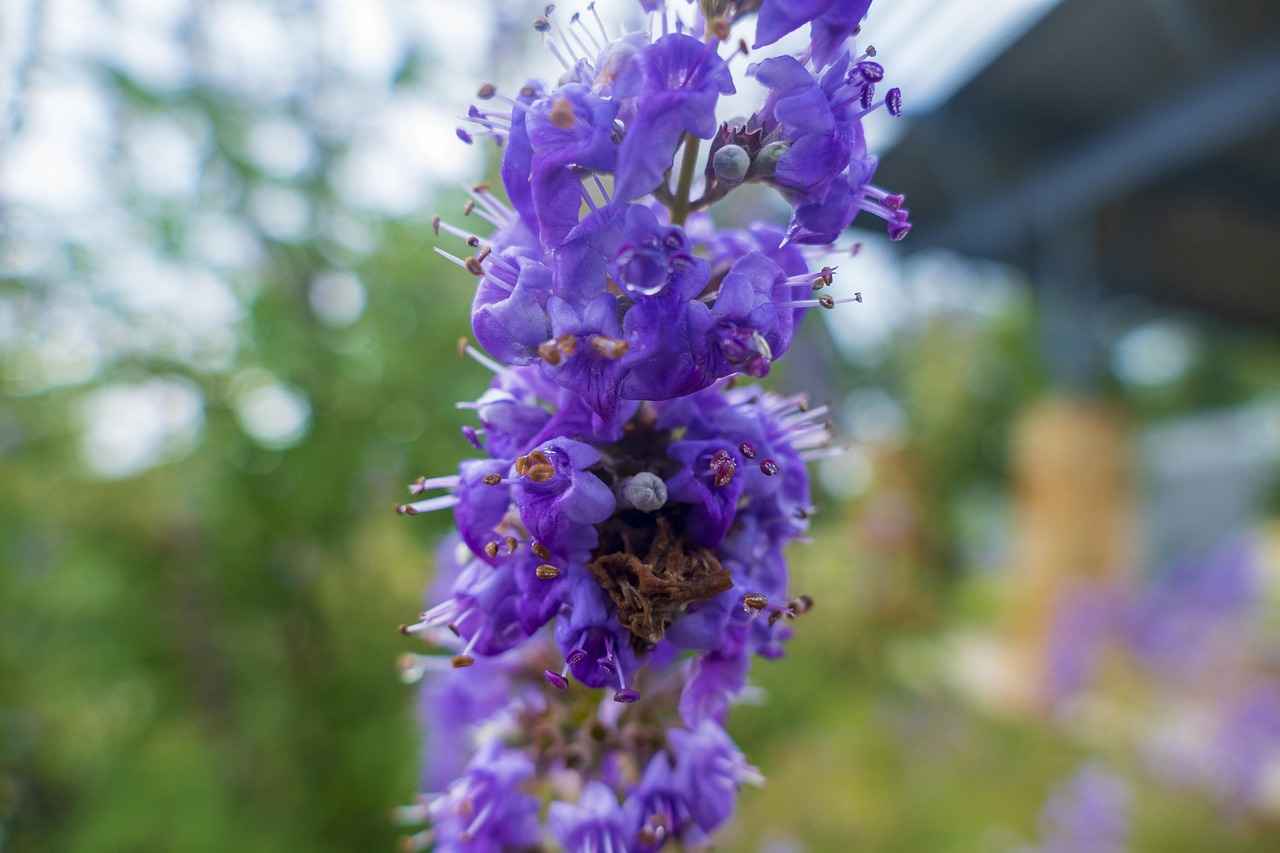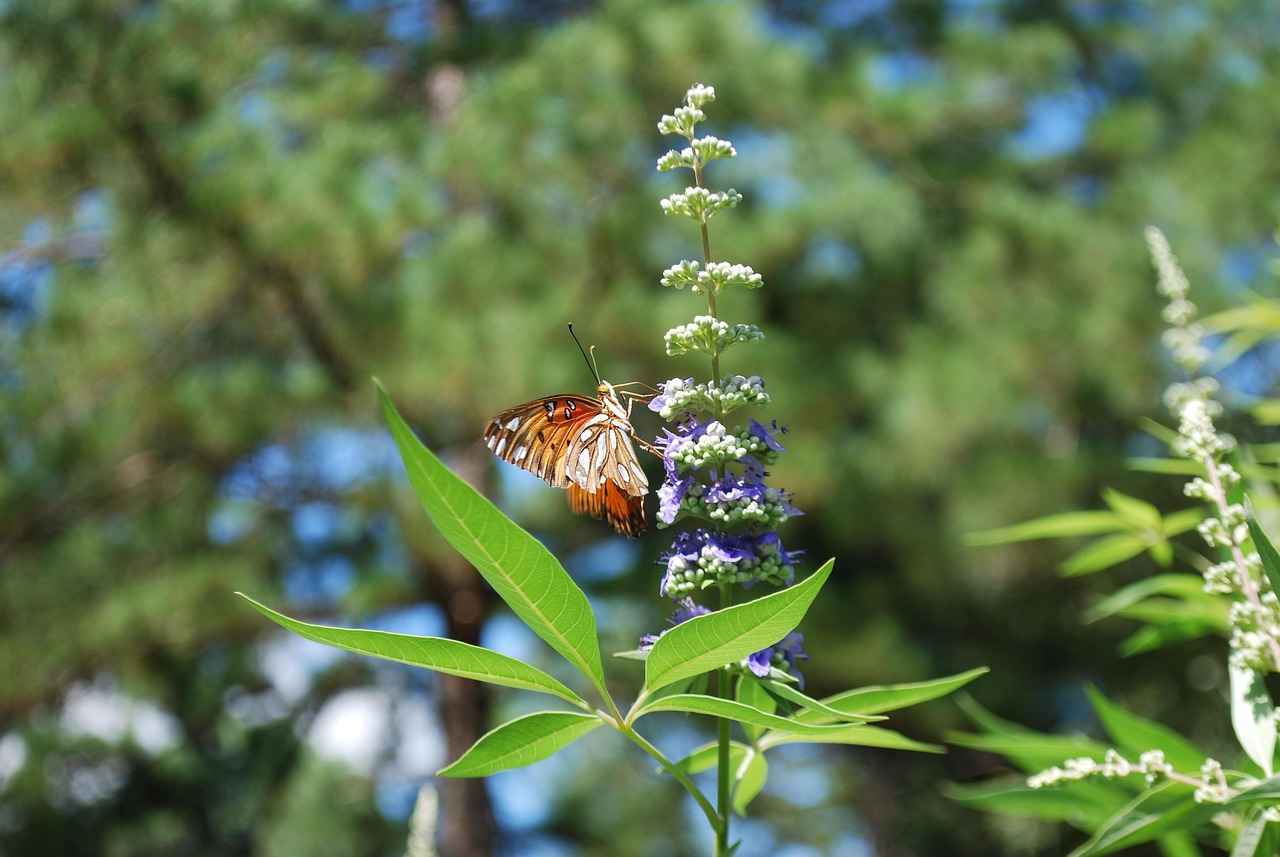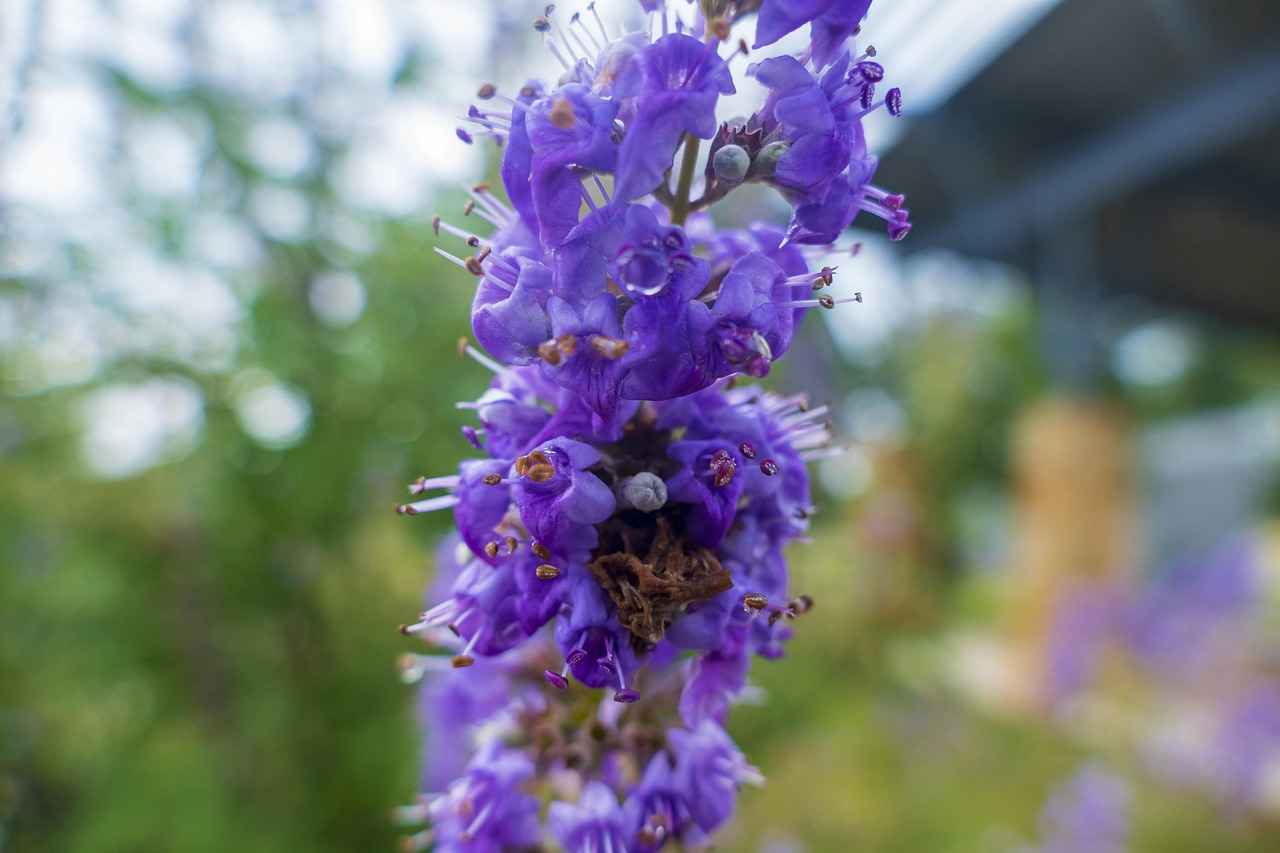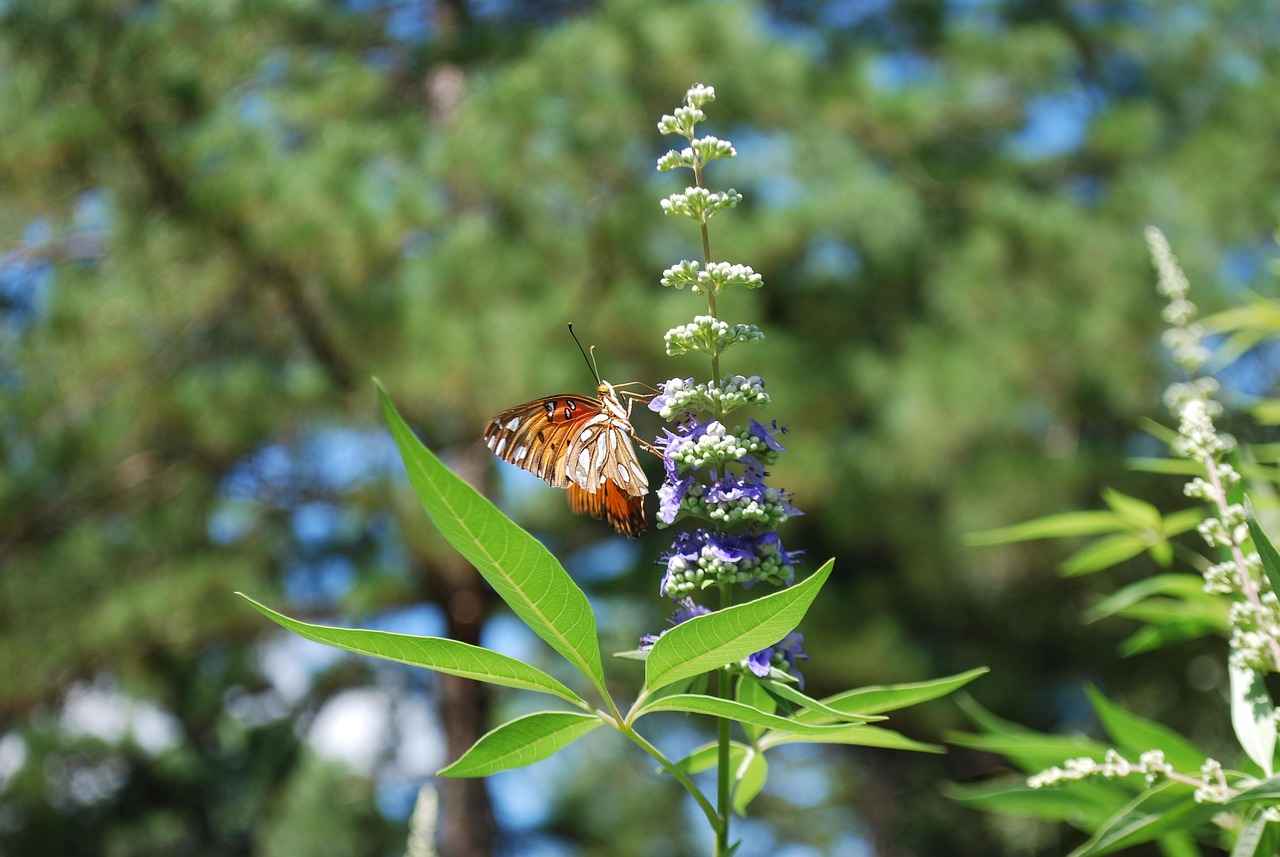This article delves into the remarkable benefits of Vitex Agnus-Castus, a natural herb renowned for its ability to support hormonal balance. With a focus on its uses, effects, and overall enhancement of well-being, this guide aims to provide comprehensive insights.
What is Vitex Agnus-Castus?
Vitex Agnus-Castus, commonly referred to as the chaste tree, is a flowering plant that has been utilized for centuries in traditional medicine, primarily for addressing hormonal imbalances in women. Its historical significance and efficacy make it a valuable herb in modern herbal practices.
How Does Vitex Work?
The mechanism by which Vitex operates is fascinating. This herb primarily influences the pituitary gland, which plays a crucial role in regulating hormone production, particularly progesterone and estrogen levels. By modulating these hormones, Vitex can help restore balance in the body.
Effects on Menstrual Cycle
- Relief from PMS Symptoms: Many women experience significant relief from mood swings, bloating, and breast tenderness when using Vitex, making it a popular choice for managing premenstrual syndrome (PMS).
- Impact on Menstrual Regularity: Regular use of Vitex may assist in restoring menstrual cycles, particularly for those facing irregular or absent periods, thus enhancing overall reproductive health.
Benefits for Menopause
Vitex is also beneficial for women going through menopause, potentially alleviating symptoms such as hot flashes and mood swings through its supportive action on hormonal levels.
Dosage and Administration
Determining the right dosage of Vitex is vital for achieving its benefits. Recommendations vary, so consulting with a healthcare provider is advisable for tailored guidance.
Forms of Vitex
Vitex is available in various forms, including capsules, tinctures, and teas, allowing users to select the method that best fits their lifestyle.
Potential Side Effects
While generally safe, some individuals may experience side effects such as gastrointestinal upset or allergic reactions. Awareness of these potential issues is crucial for safe usage.
Who Should Avoid Vitex?
Individuals such as pregnant or breastfeeding women, or those on hormonal medications, should avoid Vitex unless otherwise advised by a healthcare professional.
Conclusion: Embracing Natural Hormonal Support
Incorporating Vitex Agnus-Castus into your wellness routine can serve as a natural approach to supporting hormonal balance and enhancing overall health. However, it is always advisable to consult with a healthcare professional for personalized recommendations.

What is Vitex Agnus-Castus?
Supporting Hormonal Balance Naturally with Vitex Agnus-Castus
This article explores the benefits of Vitex Agnus-Castus, a natural herb known for its ability to support hormonal balance. Discover its uses, effects, and how it can enhance overall well-being.
Vitex Agnus-Castus, commonly known as the chaste tree, is a flowering plant that has been utilized for centuries in traditional medicine. Its primary application has been in the treatment of hormonal imbalances in women. The plant is native to the Mediterranean region and has gained popularity due to its potential health benefits, particularly in relation to female reproductive health.
How Does Vitex Work?
Understanding how Vitex operates is essential for appreciating its benefits. This herb primarily influences the pituitary gland, which plays a crucial role in regulating hormone production. By promoting the secretion of luteinizing hormone (LH), Vitex helps to balance levels of progesterone and estrogen, which are vital for a healthy menstrual cycle.
Effects on Menstrual Cycle
- Relief from PMS Symptoms: Many women report a significant reduction in mood swings, bloating, and breast tenderness when using Vitex, making it a popular option for managing premenstrual syndrome (PMS).
- Impact on Menstrual Regularity: Regular use of Vitex may help restore menstrual cycles, particularly for those experiencing irregular or absent periods, thus contributing to overall reproductive health.
Benefits for Menopause
Vitex may also offer support for women undergoing menopause, potentially alleviating symptoms such as hot flashes and mood fluctuations through hormonal regulation.
Dosage and Administration
Finding the appropriate dosage of Vitex is crucial for achieving the desired effects. It is recommended to consult with a healthcare provider for personalized guidance. Typical dosages range from 20 to 40 mg of standardized extract daily.
Potential Side Effects
While Vitex is generally safe, some individuals may experience side effects, including gastrointestinal upset or allergic reactions. It is essential to be aware of these possibilities for safe usage.
Who Should Avoid Vitex?
Certain groups, such as pregnant or breastfeeding women and individuals on hormonal medications, should avoid Vitex unless advised otherwise by a healthcare professional.
Conclusion: Embracing Natural Hormonal Support
Incorporating Vitex Agnus-Castus into your wellness routine can be a natural way to support hormonal balance and overall health. However, always consult with a healthcare professional for personalized advice to ensure safety and effectiveness.

How Does Vitex Work?
Understanding the Mechanism of Vitex Agnus-Castus is crucial for anyone interested in natural hormonal support. This remarkable herb, also known as the chaste tree, has been used for centuries in traditional medicine. Its primary action is on the pituitary gland, which plays a vital role in regulating hormone production in the body.
Vitex works by influencing the secretion of hormones, particularly progesterone and estrogen. By modulating the levels of these hormones, Vitex can help restore balance in the body, particularly for women experiencing hormonal fluctuations. This is especially beneficial for those suffering from conditions such as premenstrual syndrome (PMS), irregular menstrual cycles, and even menopausal symptoms.
One of the key ways Vitex exerts its effects is by acting on the dopamine receptors in the brain. Increased dopamine levels can lead to a decrease in the production of prolactin, a hormone that can inhibit ovulation and disrupt the menstrual cycle. By lowering prolactin levels, Vitex can help promote ovulation and restore regular menstrual cycles, making it a valuable ally for women trying to conceive.
Furthermore, studies have shown that Vitex can help alleviate symptoms associated with PMS, such as mood swings, irritability, and physical discomfort. Women who incorporate Vitex into their wellness routine often report a noticeable improvement in their overall well-being during their menstrual cycle.
In conclusion, understanding how Vitex Agnus-Castus works can empower individuals to make informed decisions about their hormonal health. This natural herb offers a holistic approach to managing hormonal imbalances, promoting not just physical health but also emotional well-being.
Effects on Menstrual Cycle
Vitex Agnus-Castus, often referred to simply as Vitex, has garnered attention for its potential to significantly improve the menstrual cycle in women. This herb is particularly noted for its ability to address hormonal imbalances that can lead to irregular periods and various symptoms associated with premenstrual syndrome (PMS).
Research indicates that Vitex works by modulating the pituitary gland’s function, which plays a crucial role in regulating hormones such as progesterone and estrogen. By promoting a healthier balance of these hormones, Vitex can help alleviate common menstrual issues.
- Relief from PMS Symptoms: Many women who incorporate Vitex into their routine report a decrease in emotional and physical symptoms associated with PMS, including mood swings, irritability, bloating, and breast tenderness.
- Improvement in Menstrual Regularity: Regular consumption of Vitex has been shown to help restore normal menstrual cycles, particularly for those experiencing irregular or absent periods. This can lead to a more predictable cycle, enhancing overall reproductive health.
- Support for Ovulation: By promoting a healthy balance of hormones, Vitex may also support ovulation, which is essential for women trying to conceive.
Overall, the incorporation of Vitex Agnus-Castus into a woman’s health regimen may provide a natural alternative for managing menstrual cycle irregularities. However, it is essential to consult with a healthcare professional before starting any new supplement, especially for those with existing health conditions or those taking other medications.
In conclusion, Vitex offers a promising option for women seeking to enhance their menstrual health naturally. Its ability to alleviate PMS symptoms and promote regular cycles makes it a valuable herb in the pursuit of hormonal balance.
Relief from PMS Symptoms
Premenstrual syndrome (PMS) can be a challenging time for many women, characterized by a range of physical and emotional symptoms that often disrupt daily life. Among the various natural remedies available, Vitex Agnus-Castus has gained significant attention for its potential to alleviate these distressing symptoms.
Research indicates that many women who incorporate Vitex into their wellness routines report a marked reduction in mood swings, bloating, and breast tenderness. These benefits stem from Vitex’s ability to influence hormonal balance, particularly by regulating the production of progesterone and estrogen. By stabilizing these hormones, Vitex may help to mitigate the emotional and physical discomfort commonly associated with PMS.
- Mood Swings: Many users of Vitex have noted a decrease in irritability and emotional fluctuations, allowing for a more stable mood throughout the menstrual cycle.
- Bloating: The herb may help reduce water retention, which is a common complaint during PMS, leading to a more comfortable experience.
- Breast Tenderness: Vitex can also alleviate breast discomfort, making it a preferred choice for women seeking relief from this specific symptom.
Furthermore, the long-term use of Vitex may contribute to a more regular menstrual cycle, enhancing overall reproductive health. Women experiencing irregular periods or severe PMS symptoms might find that consistent use of this herb leads to significant improvements in their quality of life.
In conclusion, Vitex Agnus-Castus stands out as a natural option for women seeking relief from PMS symptoms. While individual experiences may vary, many have found success in managing their symptoms through this herbal remedy. However, it is always advisable to consult with a healthcare provider before starting any new supplement to ensure it aligns with individual health needs.
Impact on Menstrual Regularity
Maintaining a regular menstrual cycle is crucial for many women, influencing not only reproductive health but overall well-being. Vitex Agnus-Castus, commonly known as chaste tree, is a herbal remedy that has garnered attention for its potential to assist in restoring regularity to menstrual cycles, particularly for those experiencing irregular or absent periods.
Research suggests that the active compounds in Vitex may interact with the pituitary gland, which plays a significant role in hormone regulation. By promoting the production of progesterone and balancing estrogen levels, Vitex can help normalize the menstrual cycle. This is particularly beneficial for women who suffer from conditions such as polycystic ovary syndrome (PCOS) or those who have irregular cycles due to stress or lifestyle factors.
In clinical studies, women who incorporated Vitex into their routine reported a significant improvement in menstrual regularity. Many noted a reduction in cycle length variability and a decrease in symptoms associated with irregular periods, such as heavy bleeding and severe cramping. This natural approach to menstrual health not only fosters a more predictable cycle but also enhances overall reproductive health.
Moreover, the use of Vitex is not limited to just restoring regularity. It may also alleviate associated symptoms such as mood swings and physical discomfort, making it a holistic option for managing menstrual health. Women often find that with regular use of Vitex, they experience fewer emotional fluctuations and a more stable mood during their cycle.
In conclusion, the regular use of Vitex Agnus-Castus may offer a natural solution for women seeking to restore their menstrual cycles. By understanding its benefits and incorporating it into a wellness routine, women can take proactive steps towards achieving hormonal balance and enhancing their reproductive health.
Benefits for Menopause
Menopause is a significant phase in a woman’s life, marked by the cessation of menstrual cycles and a host of physical and emotional changes. During this time, many women experience various symptoms, including hot flashes, mood swings, and sleep disturbances. One natural remedy that has gained attention for its potential benefits during this transitional period is Vitex Agnus-Castus, commonly known as chaste tree.
How Vitex Supports Menopausal Women
Vitex works primarily by influencing the pituitary gland, which plays a crucial role in hormone regulation. By promoting the production of progesterone and balancing estrogen levels, Vitex may help alleviate some of the uncomfortable symptoms associated with menopause. Many women report a reduction in the frequency and intensity of hot flashes, which are sudden feelings of warmth that can disrupt daily activities and sleep.
Mood Enhancement and Emotional Well-being
In addition to physical symptoms, menopause can also lead to emotional challenges. Fluctuating hormone levels can contribute to feelings of irritability, anxiety, and depression. Regular use of Vitex has been linked to improved mood stability, helping women navigate these emotional ups and downs more effectively. By supporting hormonal balance, Vitex may contribute to a sense of overall well-being during this transitional phase.
Dosage and Considerations
For those considering Vitex as a natural remedy during menopause, it is essential to consult with a healthcare provider for personalized advice on dosage and administration. Typical dosages range from 20 to 40 mg of standardized extract daily, but individual needs may vary.
Conclusion
Incorporating Vitex Agnus-Castus into a wellness routine may offer a natural approach to managing menopausal symptoms. While it is important to approach any supplement with caution and professional guidance, many women find relief and enhanced quality of life through the hormonal support that Vitex provides.

Dosage and Administration
are critical factors when considering the use of Vitex Agnus-Castus for hormonal balance. The right dosage can significantly influence its effectiveness and the overall experience of the user.
When it comes to Vitex, there is no one-size-fits-all dosage. Recommendations often vary based on individual health needs, age, and the specific condition being addressed. Therefore, it is always advisable to consult with a healthcare provider for personalized guidance tailored to your unique situation.
Below is a summary of important aspects regarding the dosage and administration of Vitex:
| Form of Vitex | Typical Dosage | Notes |
|---|---|---|
| Capsules | 20-40 mg of standardized extract daily | Follow product instructions; consult a healthcare provider for tailored advice. |
| Tinctures | 30-40 drops daily | May vary depending on concentration; check with a professional. |
| Teas | 1-2 cups daily | Use dried Vitex leaves; steep for 10-15 minutes. |
It is also important to note that individual responses to Vitex may vary. Some may experience benefits with lower dosages, while others might require higher amounts. Regular monitoring and adjustments under the supervision of a healthcare provider can optimize outcomes.
In conclusion, while Vitex Agnus-Castus can be a powerful ally in achieving hormonal balance, finding the right dosage is essential for its effectiveness. Always prioritize professional advice to ensure safe and beneficial use.
Forms of Vitex
Vitex Agnus-Castus, commonly referred to as chaste tree, is a versatile herbal supplement that is available in a variety of forms. This flexibility allows individuals to select the method that best fits their personal preferences and lifestyle. Below are the most common forms in which Vitex can be found:
- Capsules: One of the most popular forms, capsules offer a convenient way to consume Vitex. They are easy to take and provide a pre-measured dosage, making them ideal for those who prefer a straightforward approach to supplementation.
- Tinctures: Tinctures are liquid extracts of the Vitex herb, typically made by soaking the plant in alcohol or vinegar. This form allows for quick absorption and can be easily mixed with water or juice for a palatable experience.
- Teas: For those who enjoy a more traditional approach, Vitex is also available in tea form. Herbal teas can provide a soothing experience and are often enjoyed as part of a daily wellness routine.
- Powder: Vitex powder can be added to smoothies, yogurt, or other foods. This form is particularly appealing for those who enjoy customizing their intake and prefer to incorporate the herb into their meals.
Choosing the right form of Vitex depends on individual preferences, lifestyle, and how one wishes to integrate it into their daily routine. Each form has its unique benefits, making it essential to consider what works best for you.
Regardless of the form chosen, it is essential to consult with a healthcare provider to determine the most suitable option and dosage for your specific needs. Vitex can be a valuable addition to your wellness regimen, supporting hormonal balance and overall health.
Recommended Dosage
When considering the use of Vitex Agnus-Castus, determining the appropriate dosage is crucial for achieving the desired effects. While typical dosages often range from 20 to 40 mg of standardized extract daily, it is important to recognize that individual needs may vary significantly. Factors such as age, health status, and specific hormonal issues can influence the optimal amount for each person.
For those new to Vitex, starting with a lower dose may be advisable. This allows the body to adjust and helps to monitor any potential side effects. After a period of evaluation, individuals can gradually increase their dosage, always keeping within the recommended range. It’s essential to consult with a healthcare provider for personalized guidance, as they can provide insights tailored to your unique circumstances.
Additionally, the form in which Vitex is consumed can affect its efficacy. Vitex is available in various forms, including:
- Capsules: Easy to take and convenient for daily use.
- Tinctures: Liquid extracts that may offer faster absorption.
- Teas: A soothing option that can be enjoyed as part of a daily routine.
Regardless of the form chosen, it’s vital to follow the manufacturer’s instructions or the advice of a healthcare professional. This approach ensures not only effectiveness but also safety during use.
In conclusion, while the general recommendation for Vitex Agnus-Castus is between 20 to 40 mg daily, individual requirements can differ. Always seek professional advice to determine the best dosage for your specific needs and to maximize the benefits of this natural herb.

Potential Side Effects
Potential Side Effects of Vitex Agnus-Castus
While Vitex Agnus-Castus, commonly known as chaste tree, is widely regarded as a safe herbal remedy for supporting hormonal balance, it is essential to be aware of the that may affect some individuals. Understanding these side effects can help ensure safe and effective use of this natural supplement.
| Side Effect | Description |
|---|---|
| Gastrointestinal Upset | Some users may experience nausea, diarrhea, or stomach cramps, particularly when starting Vitex or taking it on an empty stomach. |
| Allergic Reactions | Though rare, allergic reactions such as skin rashes, itching, or swelling may occur in sensitive individuals. |
| Headaches | Headaches have been reported by some users, potentially linked to hormonal changes induced by Vitex. |
| Changes in Menstrual Cycle | In some cases, Vitex may cause changes in menstrual flow or cycle regularity, especially during the initial stages of use. |
It is crucial for individuals considering Vitex to consult with a healthcare professional, especially if they have pre-existing conditions or are taking other medications. This is particularly important for:
- Pregnant or breastfeeding women
- Individuals on hormonal medications
- Those with known allergies to plants in the Vitex family
Moreover, discussing any potential interactions with current medications is vital, as Vitex may interact with hormonal treatments or other prescriptions.
In summary, while Vitex Agnus-Castus can be a beneficial addition to a wellness routine, being informed about its potential side effects and consulting with a healthcare provider can help ensure a safe experience.
Who Should Avoid Vitex?
While Vitex Agnus-Castus is praised for its potential to support hormonal balance, it is critical to recognize that certain individuals should exercise caution or avoid its use altogether. This includes:
- Pregnant Women: The effects of Vitex on pregnancy are not well-studied, and its use could potentially disrupt hormonal balance during this crucial time. Pregnant women are advised to refrain from using Vitex unless explicitly recommended by a healthcare provider.
- Breastfeeding Mothers: Similar to pregnant women, those who are breastfeeding should avoid Vitex, as its impact on lactation and infant health is not fully understood. Consulting with a healthcare professional is essential before considering any herbal supplements during this period.
- Individuals on Hormonal Medications: Vitex may interact with hormonal treatments, such as birth control pills or hormone replacement therapy. It can alter the effectiveness of these medications, so it is crucial to discuss any current medications with a healthcare provider before starting Vitex.
- Those with Hormonal Disorders: Individuals with specific hormonal disorders, such as polycystic ovary syndrome (PCOS) or endometriosis, should consult with a healthcare professional prior to using Vitex. It is essential to ensure that it is appropriate for their unique hormonal situation.
In conclusion, while Vitex can offer benefits for many, it is vital for certain populations to avoid its use unless under the guidance of a healthcare professional. Always prioritize safety and informed decision-making when it comes to herbal supplements.
Interactions with Medications
When considering the use of Vitex Agnus-Castus, also known as chaste tree, it is crucial to be aware of its potential interactions with various medications. This herb, celebrated for its ability to support hormonal balance, may not be suitable for everyone, particularly those undergoing hormonal treatments or taking specific medications.
Understanding the Importance of Consultation
Before starting Vitex, it is essential to discuss your current medications with a healthcare provider. This conversation is vital as Vitex can influence hormonal levels, potentially altering the effectiveness of certain treatments. For instance, women on hormonal contraceptives or hormone replacement therapy should exercise caution, as Vitex may interact with these medications, leading to unintended effects.
Potential Interactions
- Hormonal Treatments: Vitex may enhance or diminish the effects of hormonal therapies.
- Antidepressants: There is some evidence that Vitex could interact with certain antidepressants, potentially affecting mood regulation.
- Other Herbal Supplements: Combining Vitex with other herbal remedies may lead to unpredictable results, necessitating professional guidance.
Who Should Avoid Vitex?
Individuals who are pregnant, breastfeeding, or those with hormone-sensitive conditions should avoid using Vitex unless advised by a healthcare professional. This precaution is crucial to ensure safety and prevent any adverse reactions.
Conclusion
In summary, while Vitex Agnus-Castus offers numerous benefits for hormonal balance, it is imperative to approach its use with caution. Always consult with a healthcare provider to ensure that Vitex is suitable for your specific health needs and to avoid potential interactions with medications.

Conclusion: Embracing Natural Hormonal Support
Incorporating Vitex Agnus-Castus into your wellness routine can serve as a natural method to support hormonal balance and enhance overall health. This herb, often referred to as the chaste tree, has been utilized for centuries for its potential to alleviate various hormonal issues, particularly in women.
Research suggests that Vitex may play a significant role in regulating the menstrual cycle, providing relief from symptoms associated with premenstrual syndrome (PMS), and supporting women during the menopausal transition. By influencing the pituitary gland, Vitex helps in the regulation of hormones such as progesterone and estrogen, which are crucial for maintaining a healthy hormonal balance.
However, it is essential to approach the use of Vitex with caution. While many individuals experience positive effects, consulting with a healthcare professional is vital for personalized advice tailored to your specific health needs. This is particularly important for those who are pregnant, breastfeeding, or taking hormonal medications, as Vitex may interact with these conditions.
When considering Vitex, it is also important to explore its various forms, including capsules, tinctures, and teas, to find the method that best suits your lifestyle. Typical dosages range from 20 to 40 mg of standardized extract daily, but individual requirements may differ, making professional guidance invaluable.
In conclusion, while Vitex Agnus-Castus offers promising benefits for hormonal support, it is crucial to prioritize safety and efficacy by seeking advice from a qualified healthcare provider. Embracing this natural approach can lead to improved well-being and a more balanced life.














